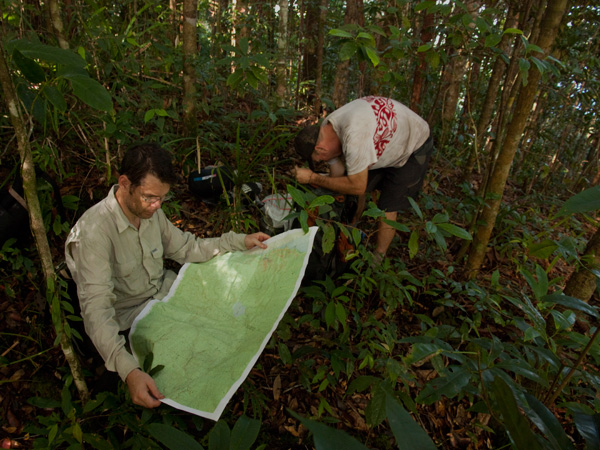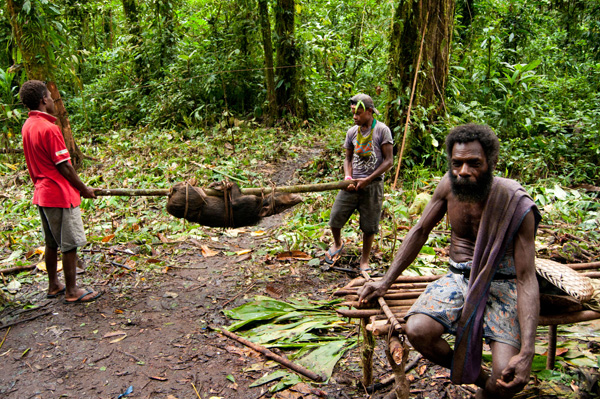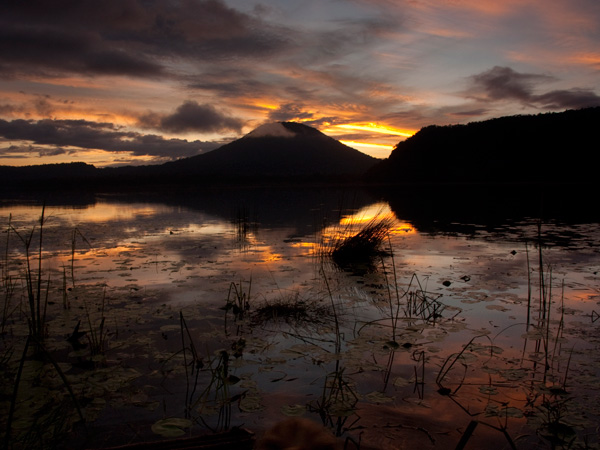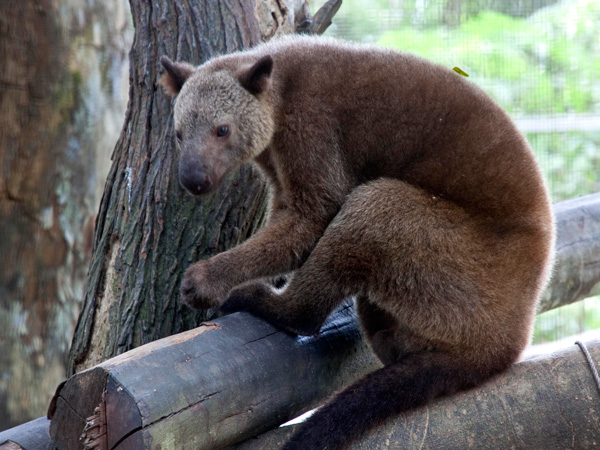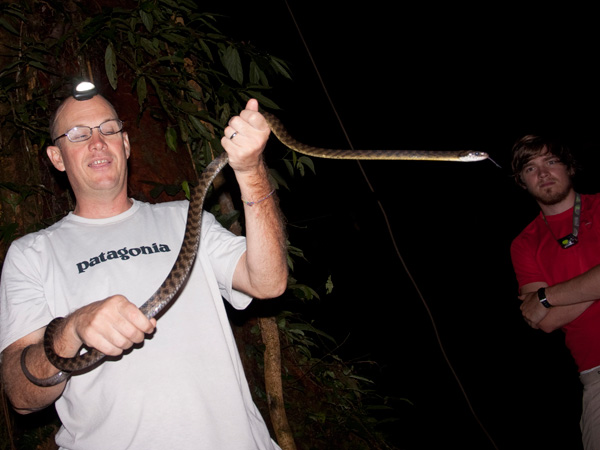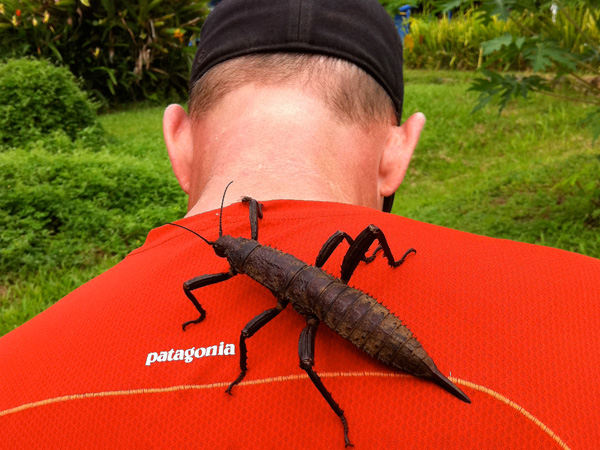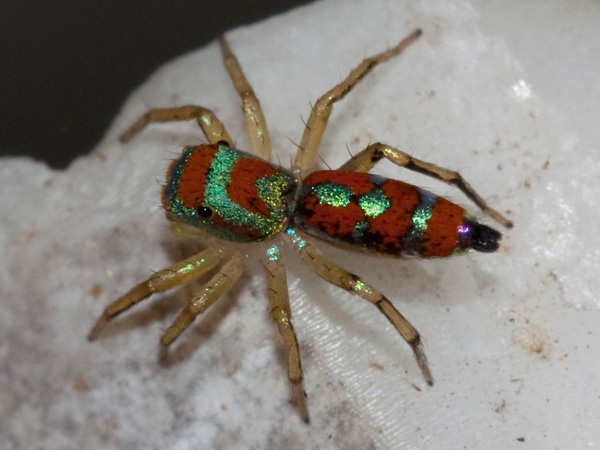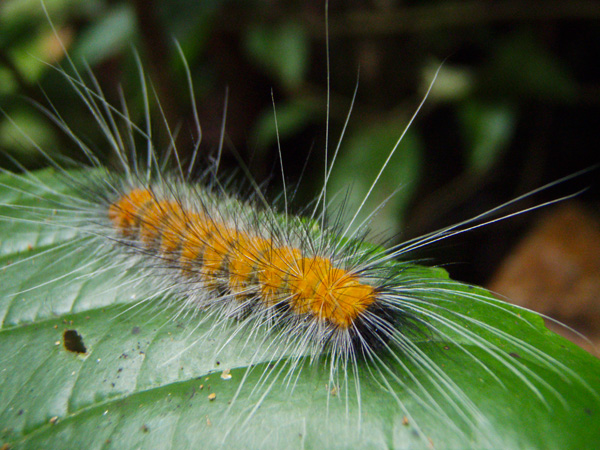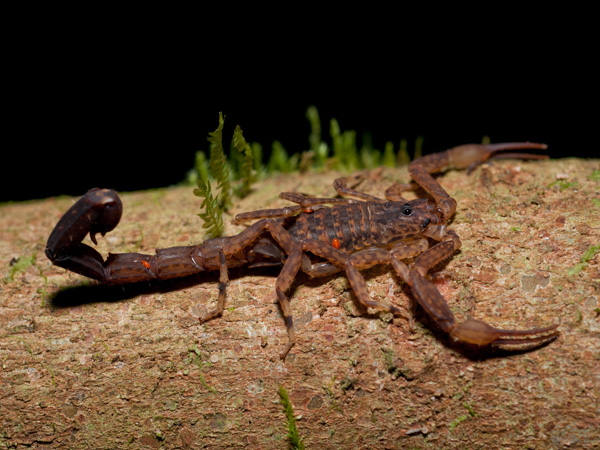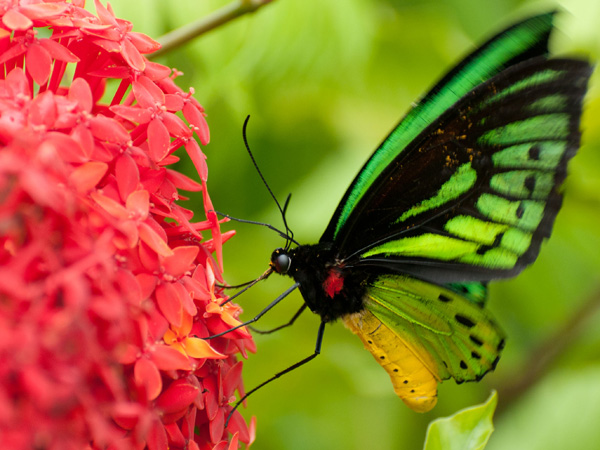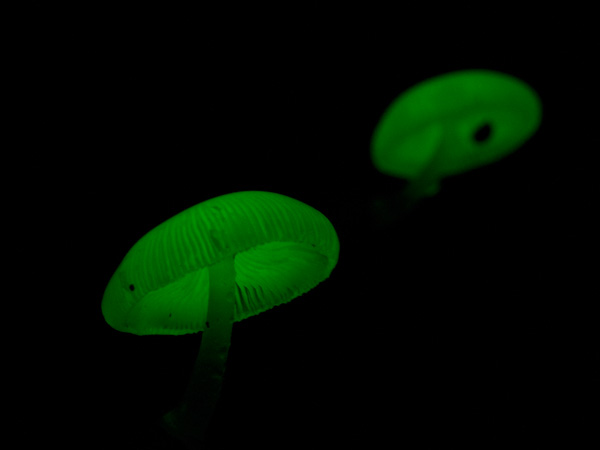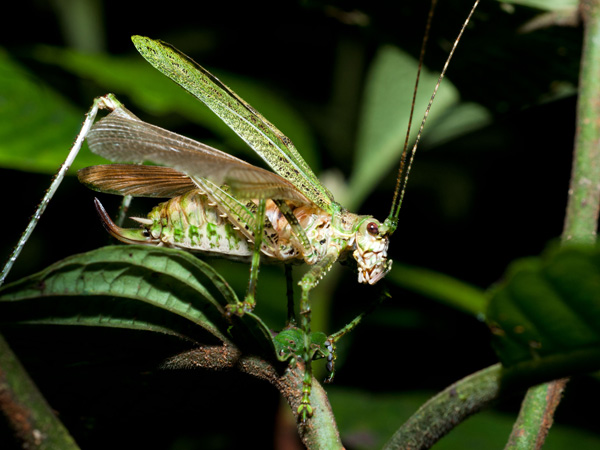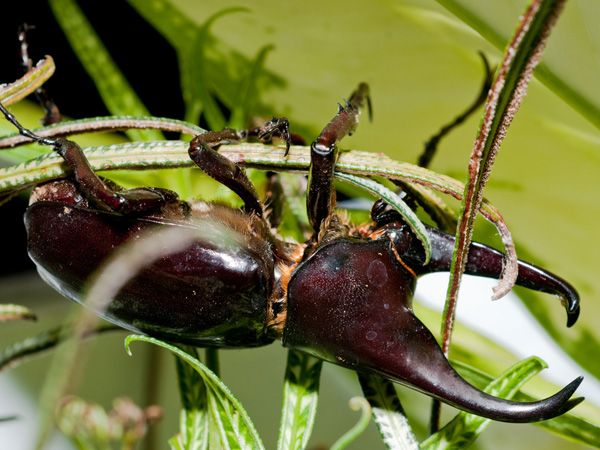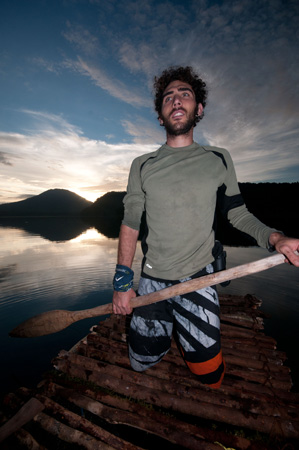The Geologist in the Jungle
One man's journey into the rainforest in search of a mysterious tree kangaroo.
In July of 2011, John Lane, an explorer and geologist from California State University-Chico, mounted a biological research expedition to a remote wilderness region of New Britain, a volcanic island off the coast of Papua New Guinea. The greater PNG region is a hotspot of biodiversity, but one that is highly threatened by oil palm plantations and other industries. Lane’s quest was to spur environmental conservation by finding a mysterious species of tree kangaroo, one of the rarest and most elusive mammals on earth, which natives had witnessed but scientists believed did not exist on New Britain. So with the help of local Nakanai tribesmen, several scientific researchers and a few Cal State students, Lane set up a base camp in a caldera deep in the forest, from which to conduct biological research and search for the creature. This following is adapted from Matthew Power's account of the expedition, Island of Secrets, just published by The Atavist. The full ebook single is available for the Kindle and iPad/iPhone via The Atavist website.
***
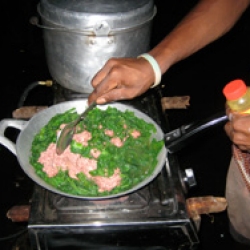
Photograph by Dylan van Winkel.
Of course, expedition life had its deprivations. For weeks, meals had consisted of the limited possibilities afforded by ramen, rice, canned tuna, corned beef, and the occasional side of sautéed jungle ferns. We also consumed packets of Hiway Hardman brand biscuits, illustrated with a cartoon of a shirtless truck driver and the pidgin phrase “Strongpela tru!” that managed to be at once igneous and homoerotic. The tuna had a garish maroon cast to it, and the corned beef—the same “bully beef” eaten in the trenches of World War I—slid out of its tin in a coagulated cube of compressed trimmings. The joke around camp was that there were basically two options: cat food or dog food.
There were occasional variations in the meal plan. One afternoon, Mesak Mesori, a shirtless, bearded 55-year-old Nakanai hunter with six-pack abs and betel-red stumps of teeth, marched proudly into camp. He carried a long spear with a tip made of sharpened rebar and was followed by a parade of bois. (In Tok Pisin, the lingua franca of Papua New Guinea’s 800-plus languages, young men are referred to as “bois,” and girls are called “meris.”) They were shouldering a pole to which a large wild pig had been bound with vines. The pig had been caught in a leg snare—the wire had cut down to the bone by the time Mesak found it—and he had speared it in the lungs to dispatch it. The camp filled with the smell of burning hair as the bois held the carcass over the fire and then proceeded to butcher it with a machete. Mesak stood over them, gesturing and speaking in Nakanai, and the bois listened to him with respect and took the task seriously. Nothing was wasted, save the dark green gall bladder, which a boy plucked from the liver and tossed far into the forest. One of the bois told me that each part would be given to members of the village according to tribal tradition: the heart and liver to the elders, the eyeballs a delicacy reserved for women. Mesak had told Lane that this was why he had come out to help in his hunt for the tree kangaroo—he wanted the forest to be here for his grandchildren, and he wanted them to know its ways.
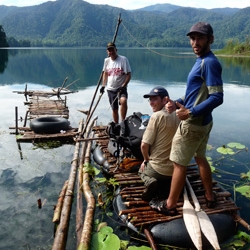
Photograph by Dylan van Winkel.
Lane was accompanied by three Cal State undergrads: Alan Rhoades, Emily Ramsey, and Heidi Rogers. I observed to Lane that a bunch of innocent Californian college kids in the middle of a jungle sounded like the archetypical setup of a 1970s exploitation horror movie. And it did seem as though an F/X crew was on the premises. One morning, Lane woke to find a 10-foot web strung between the same pair of trees as his hammock, an orb weaver spider the breadth of my palm splayed at its center. There were at least three species of scorpion in camp, and the native amethystine pythons were known to grow to 28 feet. Tiger leeches waited in ambush on the undersides of leaves, squirmed through the eyelets in hiking boots, and crawled their way to some out-of-the-way sites to feed undisturbed. A few days earlier, Lane thought he had a loose piece of skin on the inside of his cheek and discovered a leech feeding inside his mouth. Alan discovered the same while brushing his teeth. One morning, Sarah Wells, a British researcher working toward a Ph.D. in ornithology, had felt what she thought was a bit of dirt in her eye. She asked Heidi to take a look and was informed that a leech had attached itself to her eyeball, where it was happily engorged. As the camp gathered around to observe, Sarah maintained clinical detachment while Heidi attempted to pluck it off with tweezers.
The students, despite their physical afflictions, were lucky to have made it to New Britain at all. Their presence had apparently raised some red flags with the Chico State administration, which was not pleased at the idea of students heading off with an adjunct professor to crocodile-infested volcano territory. Perhaps they had read the State Department’s extensive travel warnings. In any event, the morning of his departure flight, Lane was called in to meet with Chico State President Paul Zingg and the university’s risk manager, who threatened to block the students from participating in the expedition. Chico State is an institution perhaps best known for being ranked America’s No. 1 party school by Playboy in 1987, a title it held for 15 years. When the Office of Risk Management calls something into question, watch out. Lane informed them that Alan and Emily had purchased their tickets on their own and were already en route, laid over in Fiji, and the president ordered Lane to fly to Port Moresby, Papua New Guinea’s crime-ridden capital, to rendezvous with the students and escort them directly back to Northern California.
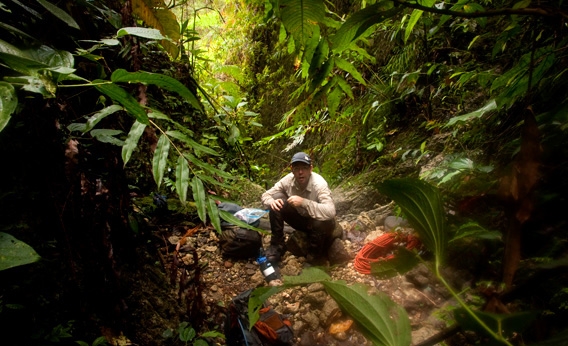
Photograph by Dylan van Winkel.
After planning dozens of previous expeditions full of ego clashes and unpleasant surprises, Lane had developed various coping strategies. This, in part, explained his deadpan affect and seeming inability to get worked up over almost anything. He received the Chico State president’s direct order not to bring the students along with stubborn unflappability. “If you let that stuff get to you, you end up with a nine-to-five as a pencil pusher, stuck in traffic,” Lane told me. There was something in his tone that implied such a fate was the one defeat he really feared. So Lane had simply ignored Zingg’s request and met up with the students in Port Moresby to begin the expedition. And now here they were, deep in the New Britain jungle, far beyond the reach of any administrative consequence, ready to fan out in search of Lane’s elusive quarry.
***
Dylan van Winkel, a 25-year-old South African herpetologist who had joined the expedition, told me at one point that tree kangaroos give off a strong, musky odor, so I inhaled deeply, hoping for a whiff. Instead, I smelled rotting vegetable matter and my own sweat. I searched the canopy overhead for a glint of chestnut fur among the mossy branches. Almost immediately it began to rain, pounding down so hard that it was like being held beneath an open hydrant, the roar so loud we could barely hear one another. We didn’t even bother with raincoats, which would only drench us from the inside with the humidity. The jungle was filled with mutant versions of flora more familiar as houseplants and garden flowers: 10-foot ferns, head-high begonias, and fluorescent-pink impatiens erupting from the rotting crevices of trees. Rattan, that Pier 1 standby, was here a flesh-tearing horror, with stems covered in three-inch spikes and cat-claw thorns lining the undersides of its fronds. My clothes were soon shredded and my forearms bloody with deep scratches.
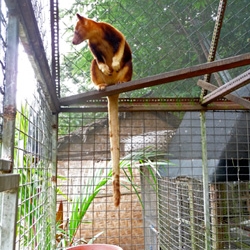
Photograph by Dylan van Winkel.
Dylan stopped frequently to roll over rotten logs, each one like a lottery scratch-off whose jackpot was yet unnamed species of spiders, beetles, and frogs. At one point, he squatted and poked at something on the ground with the machete, a slimy heap of half-digested seedpods. “Cassowary shit,” he said. We all took pictures. Five feet tall and weighing perhaps 60 pounds, the Bennett’s Cassowary is one of the more dangerous creatures in the forest. It resembles a flightless steroidal turkey, with a royal blue neck streaked with red, a mound of shaggy black feathers, and dagger-like spurs on thick legs. The birds can be territorial and attack humans, leaping and punching with their spurs or head-butting with an ax-like crest of bone atop their skulls. “He can jump up to a meter in the air, and he’ll go for your throat, your stomach, or your groin,” Lane casually observed. He had been charged by one, of course.
From a scientific perspective, of course, stomping through inaccessible rainforest and looking around at random trees is hardly a methodologically sound way of finding a tree kangaroo. Some of the best research on tree kangaroos in the wild has been done by Lisa Dabek, director of the Tree Kangaroo Conservation Program at the Woodland Park Zoo in Seattle. Dabek used native hunters with tracking dogs to locate the animals, then sent climbers up into the branches after them, until, to escape, the tree kangaroos leaped to the ground, where they were promptly tackled, radio-collared, and released. There are few other ways to make long-term observations. But Dabek’s research and dedication have achieved real results; she persuaded local landowners to create an 180,000-acre conservation area around the heart of the tree kangaroo’s habitat on the mainland’s Huon peninsula. It took Dabek 10 years, and extraordinary cooperation by the native communities, to establish the protections.
That is exactly what Lane would have to do—a long process of diplomacy and trust-building with the local tribes—but it was unclear whether he had the patience for that. Lane was aware of this, of course, but rigorous methodology and slow diplomacy were not his preferred M.O. My own feelings wavered between resentment at having come halfway around the world on a half-assed goose chase and a sense of wonder that we were searching for something rich and strange at the far end of the earth. But there I was, and there was nothing much to do but follow Lane deeper into the jungle of the Nakanai. He was out there trying for the big win, the Hail Mary that would save New Britain with one grand and miraculous discovery.
***
Find the rest of Matthew Power's Island of Secrets at The Atavist.
